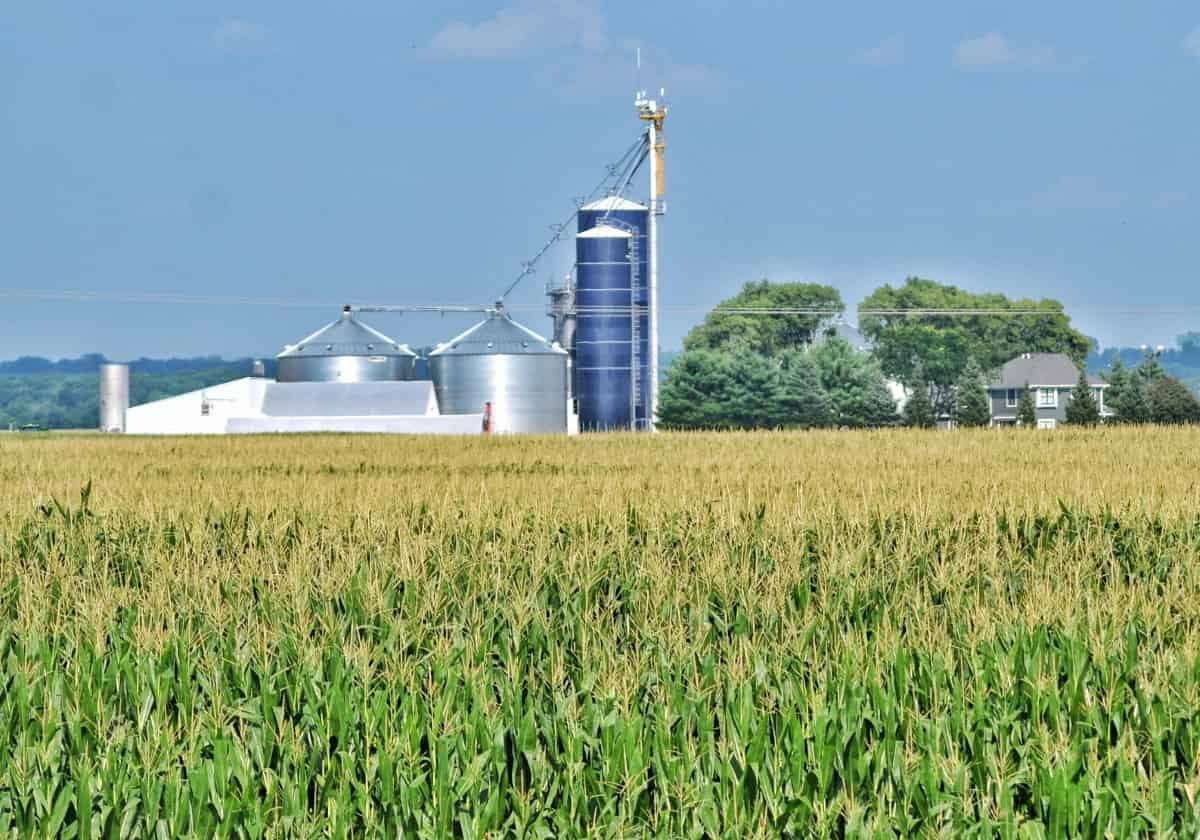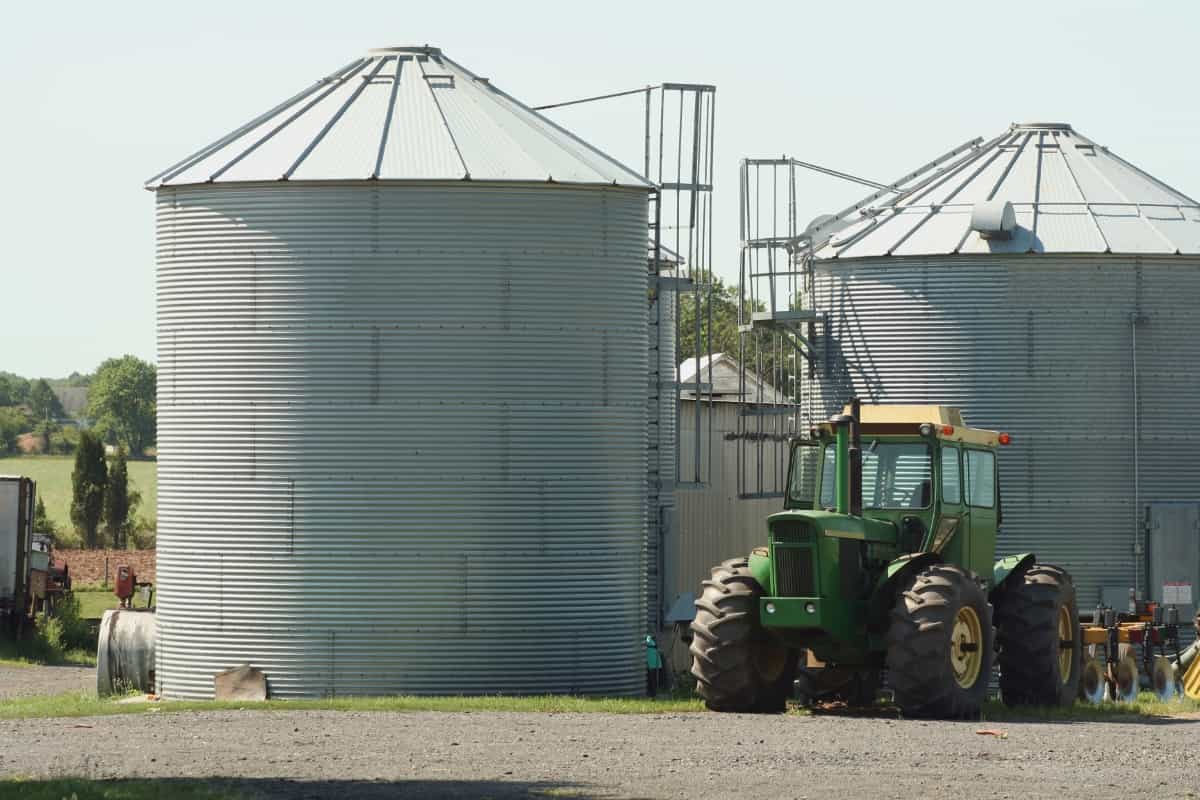The agricultural industry has drastically changed over the last few decades, and you are not even considered a farmer without using some of the latest technologies and tools. Farm silos have become one of the most important pieces of equipment in most farmhouses today, and if you wish to maximize your profits this year, you should consider buying one.

Farm Silos
What to Consider When Selecting a Farm Silo
- The material being stored: The type of material and amount will determine the type of silo and the features it needs.
- Discharge Height: As a cost factor, the silo’s discharge height must be considered carefully. Also important to consider is the outlet diameter of the hopper, which plays a role in how fast it discharges its contents.
- Site location: The size and the area where the silo will be built will determine the type and method of construction.
- Construction Time: Labor and construction time will account for a major part of the project cost.
- Maintenance Requirements: It is important to determine what you will need to do to maintain high performance at a minimum cost over the lifetime of the silo.
- Appearance: When it comes to silos that are visible to the public, don’t forget to consider their appearance. A painted silo will need to be repainted at a high cost, while powder coatings resist corrosion and weathering for a long time.
Types Of Farm Silos
Tower Silos
On farms, tower silos are the most common type of silos. Wood, cement, concrete, and steel, among other materials, are commonly used to construct them. Farmers use tower silos to store grain, fermented feed, cement, animal slurry, and woodchips. These materials are loaded into silos using augers or air slides. Trucks or railcars can even be used to unload tower silos. Because tower silos reduce storage losses, are easier to construct, and are convenient to unload, farmers prefer them.
Bunker Silos
Underground bunker silos are trenches filled with storage material and loaded by tractors and loaders. The bunker silos are concrete, and tarps cover them from above. Bunker silos are heavily used in the military for storing and handling missiles. A bunker silo is usually built by farmers who operate on a large scale, as it offers faster unloading rates, can hold large capacities, and can be filled using conventional farming equipment.
Bag Silos
In the field, bag silos are used to store grain and fodder in plastic and hermetic bags. It is extremely heavy and requires a machine to compact bag silos. In addition, they are sealed on both ends. Few safety and health hazards are associated with bag silos, so they require lower capital investment. It also requires specialized equipment to function, and storing grain in them poses a high risk since farmers will incur a huge loss if the bag is compromised.
Silage Piles
A silage pile is a type of silo built for holding silage. It is easy to construct silage piles, and they serve as great short-term storage solutions.
Use of Farm Silos
A silo is an efficient storage facility for grains, fermented feed, and animal slurry on a farm. It is common for silos to have opening and closing provisions that allow farmers to load and unload materials. To unload grains, the bottom of the silos is usually removed from the rest of the unit. To keep the contents stored in the silo fresh, the grain settled at the bottom must be regularly removed.
In case you missed it: Langra Mango Farming: A Comprehensive Guide to Planting, Pruning, Care, and Harvest

A special coating is applied to most modern silos’ interior surfaces to prevent a reaction with the stored contents. In addition, they feature monitoring equipment that helps farmers track grain quality and temperature. Farm silos serve the primary purpose of protecting grains from external forces, thereby extending their storage life.
Advantages of Using Farm Silos
Better Utilization of Ground Space:
The height of silos is substantially higher than that of other storage solutions. By doing so, they are able to store the same amount of grain on a smaller area of land. Since land is expensive, you can also save money by reducing the amount of ground you need to cover. You can use space better even if you have plenty of space.
Easy For Loading and Unloading
The process of gathering and moving stored products to and from a silo or silo tank is much more efficient than alternative methods. As a result, you can save capital in the long run. You can quickly remove and put the stored products into the silo using a reasonably inexpensive vacuum or auger. Neither the owner nor the employees will lose money due to this.
For Maintaining Product Quality for a Long Time
Any trade requires control, which is one of the advantages of using silos for storage. By keeping your grain in one place, you can control its quality much more effectively. You can prolong the life of your grain by maintaining a consistent temperature and preventing insects and rodents from invading.
Better Durability of Stored Products
You can store your products in an airtight silo for decades, providing perfect conditions for their longevity. In addition, it can last longer if it is properly maintained. Implementing a strict maintenance program when dealing with a project of this magnitude is important. The lifespan of some silos can be as long as 25 years before extensive repairs are required.
What are the Disadvantages of Farm Silos?
Despite silos being a popular method of storing materials, there are still risks associated with them. It is very common for grain elevators to suffer from fires and explosions. When fumigants and pesticides are used heavily, people can become intoxicated. Moreover, suffocation and inhalation of flammable vapors can cause accidents.
In case you missed it: The Best Fertilizer for Peonies: When and How to Apply

Conclusion
You can also search by other categories and subcategories if you’re still not finding the right silo. Most importantly, your silo does its job for you at the end of the day. Keep your research in mind at all times. It is advisable to have a professional or a team of professionals help you build your silo, depending on the type of silo you want, so that you won’t end up with a potentially dangerous silo.
- Feed Your Flock for Less: Top 10 Tips to Save on Chicken Feed
- Ultimate Guide to Ossabaw Island Hog: Breeding, Raising, Diet, and Care
- Hatching Answers: The Top 10 Reasons Your Chickens Aren’t Laying Eggs
- Eggs and Economics: Breaking Down the Cost of Raising Backyard Chickens
- Defend Your Greens: Proven Methods to Keep Iguanas Out of Your Garden
- Ultimate Guide to Cinnamon Queen Chicken: A Comprehensive Guide for Beginners
- Ultimate Guide to California Tan Chicken: Breeding, Raising, Diet, Egg-Production and Care
- Ultimate Guide to Marsh Daisy Chicken: Breeding, Raising, Diet, and Care
- 10 Types of Chicken Farming Businesses You Can Start for Profits